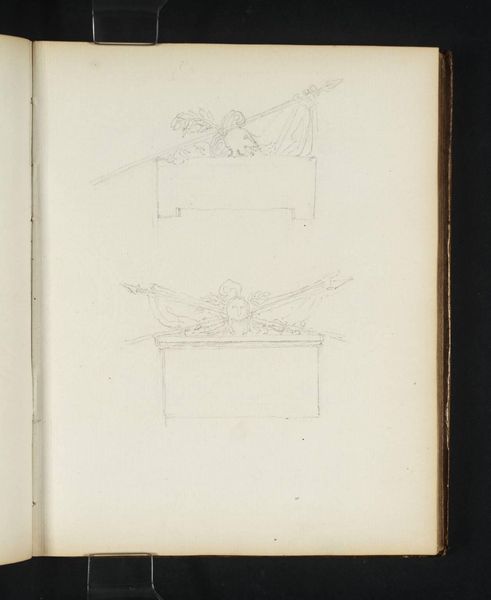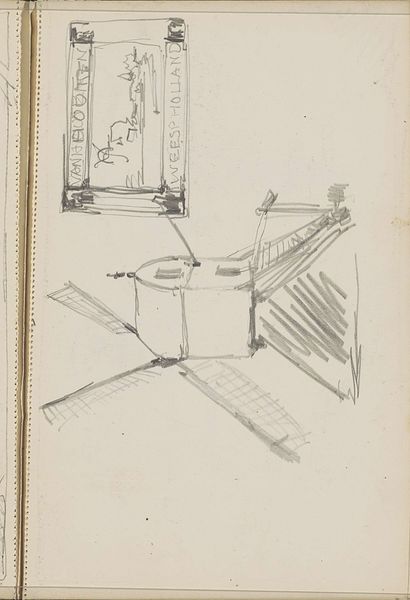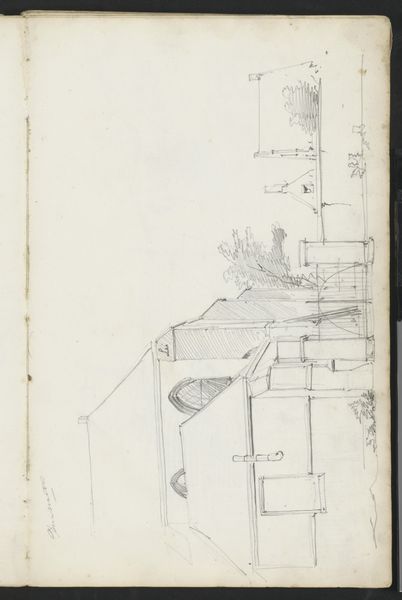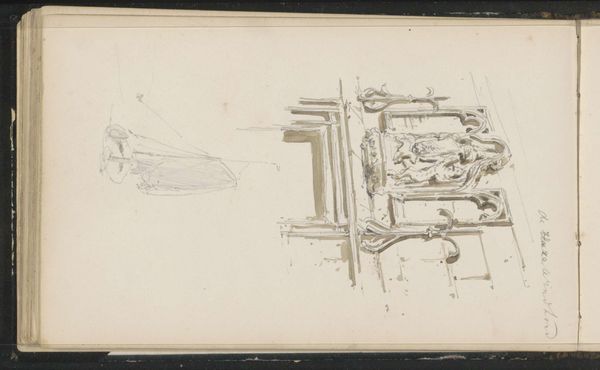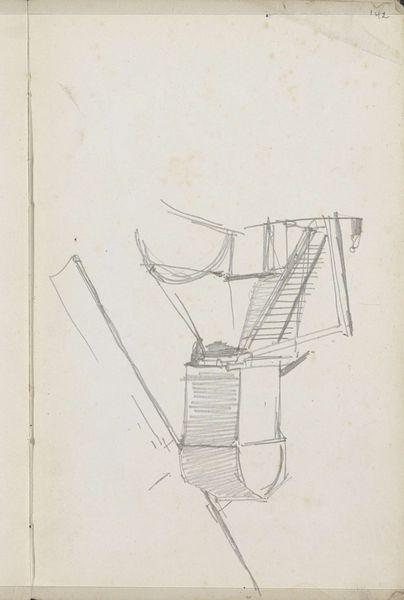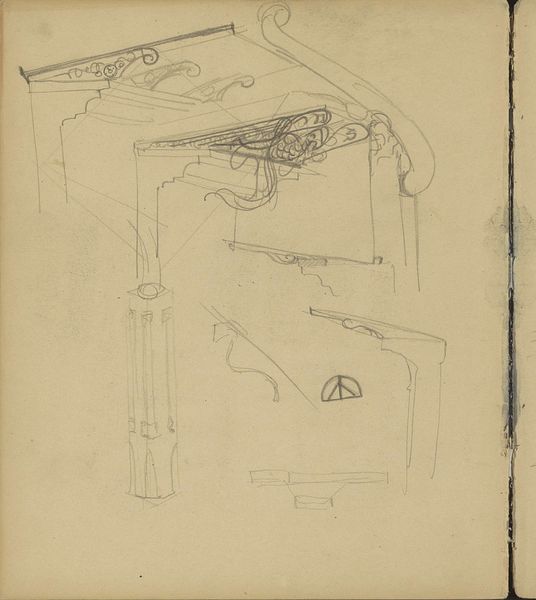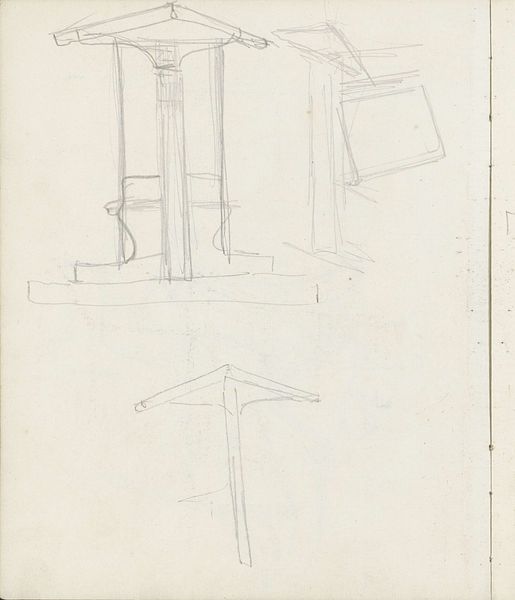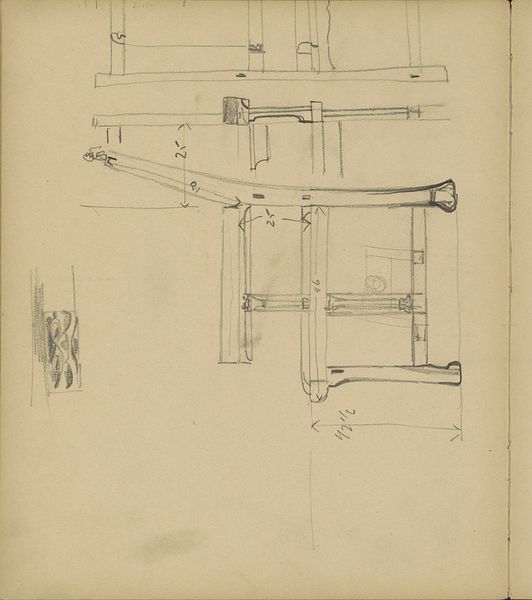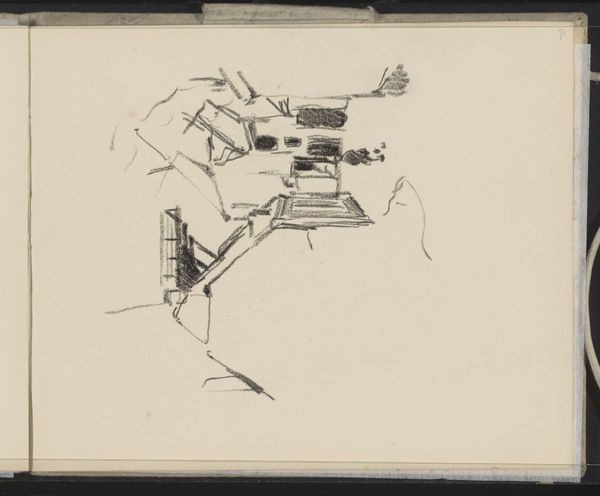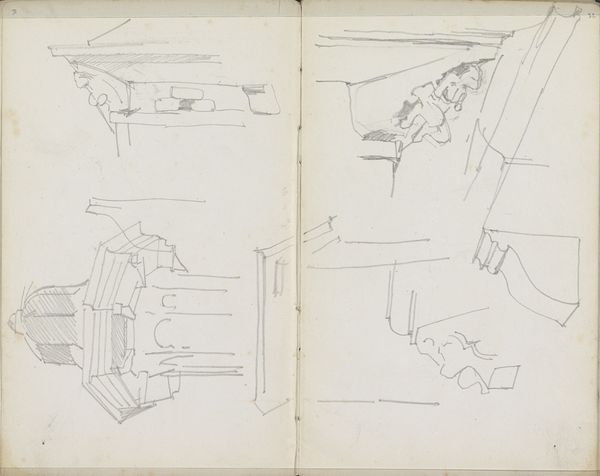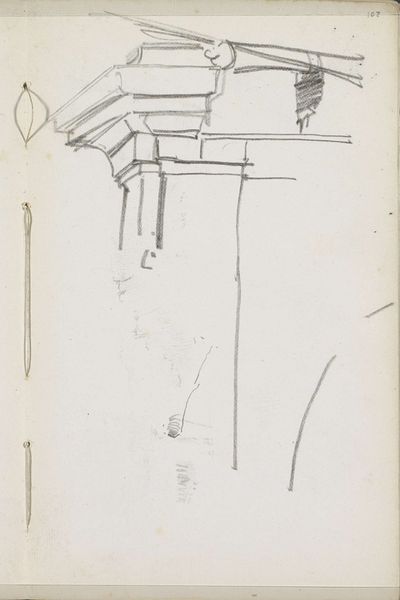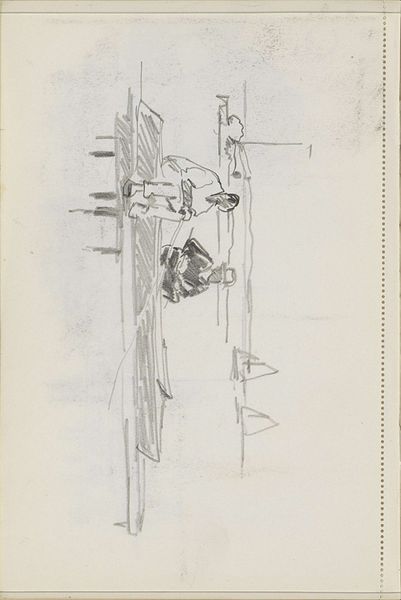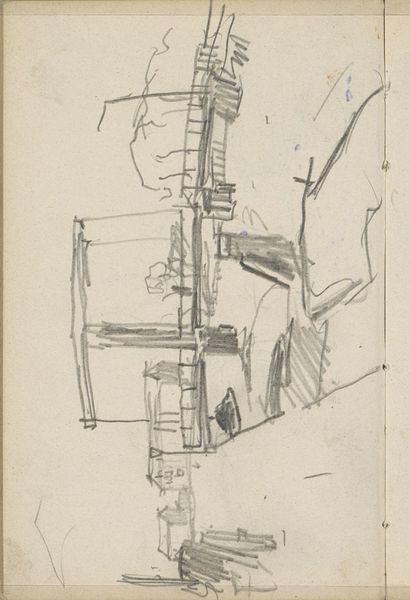
drawing, paper, pencil
#
drawing
#
aged paper
#
quirky sketch
#
impressionism
#
sketch book
#
hand drawn type
#
paper
#
personal sketchbook
#
idea generation sketch
#
sketchwork
#
pencil
#
sketchbook drawing
#
storyboard and sketchbook work
#
sketchbook art
#
realism
Copyright: Rijks Museum: Open Domain
Curator: Here we have George Hendrik Breitner's "Architectuurstudies, mogelijk van een portaal," made with pencil on paper around 1880-1882. It's currently held in the Rijksmuseum. Editor: It feels ephemeral, almost hesitant, doesn't it? Like catching a fleeting thought. Curator: Absolutely. These sketches give us insight into the mind of the artist. Breitner was known for capturing the raw energy of Amsterdam. We can almost see him rapidly jotting down these architectural details. He was working during a time of rapid industrial and urban development. These kinds of portal or gate designs signified both status and controlled entry. Editor: I am drawn to the aged paper, you can practically see and feel the grain, the tooth that grips the pencil. You can feel the labor that went into each stroke. Notice also the way he has seemingly investigated specific components or modules as he designs the overall piece. This is all part of a process that has an appealing hands-on quality. What do you think this says about access and Breitner's engagement in societal architecture? Curator: Well, the details are themselves revealing. Note the quasi-classical elements on that portal section. Think of the civic pride these monumental constructions sought to inspire in an expanding and shifting urban population. The art itself would reflect the same cultural politics that shaped urban space and life at this moment. Editor: But there's an ambiguity here too. These aren't finished plans; they're sketches, suggestive rather than prescriptive. Look how little embellishment he needed for that molding to define its function, you can tell he understands what is core to architecture through materiality. There's beauty in that distilled utility. Curator: Indeed. It highlights how Breitner was grappling with the traditional forms of power embedded in architecture and infrastructure as the very nature of public space was in question at this time. Editor: So in viewing these sketches, it seems we get a peek not just into Breitner's practice, but also into how architectural thinking evolves by material form, not only on paper, but how societal values inform this form. Curator: A fruitful perspective indeed. Thank you for illuminating those considerations with your keen observation.
Comments
No comments
Be the first to comment and join the conversation on the ultimate creative platform.
